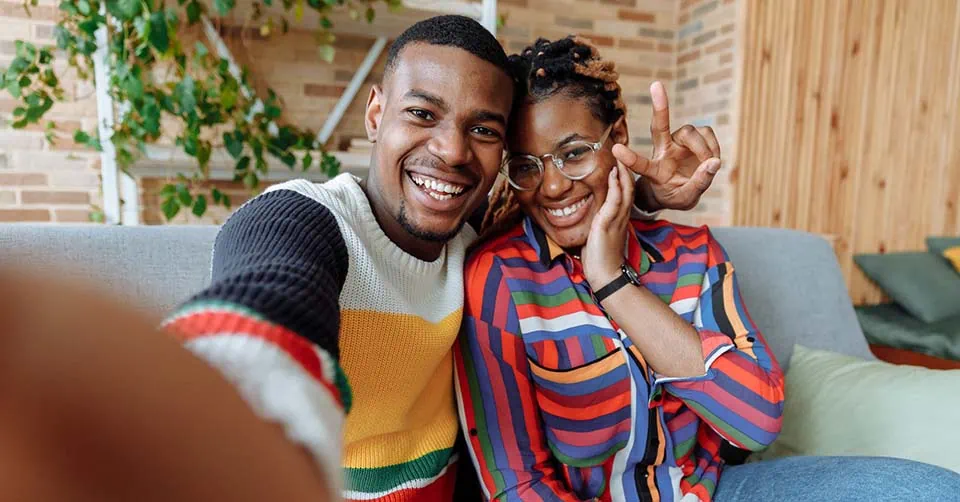OPINION
5 Types Of BDSM And Practice Tips
Published
7 months agoon
By
wpadminee
BDSM encompasses types and a broad range of erotic practices and kinks. These practices build on power dynamics between consenting sexual partners. The term “BDSM” combines three acronyms. Each acronym represents a distinct community that uses power imbalance for sexual pleasure.
B/D stands for bondage and discipline. D/s refers to domination and submission. S/M denotes sadism and masochism. In BDSM encounters, one partner typically takes on the dominant role, often called the “dom.” The other partner embodies the submissive role, known as the “sub.” Together, they act out consensual fantasies.
Both partners derive sexual pleasure and satisfaction from performing their chosen roles during the encounter. The dominant partner may exercise control, while the submissive partner yields to that control. This power exchange forms the core of many BDSM practices.
The BDSM community often includes other “kinky” groups with nonconforming sexual interests or fetishes. For example, some individuals have rubber or leather fetishes. Others enjoy animal roleplay, where one partner takes on the role of an animal or pet.
BDSM emphasizes consent, communication, and mutual enjoyment. Participants negotiate boundaries and establish safe practices before engaging in activities. They often use safe words to ensure all parties can stop the action if needed.
BDSM encompasses various sexual preferences within the erotic community. These preferences interact and overlap in multiple ways.
4 main types dominate the BDSM outlook:
1. Bondage Play
Practitioners use tools to restrain one partner during sexual encounters. Common restraints include rope, leather straps, bondage tape, ties, handcuffs, spreader bars, ball gags, blindfolds, and chains.
These tools restrict the subject’s senses or movement, transferring control to the other partner. This restriction aims to heighten mutual sexual stimulation.
2. Discipline
The dominant partner establishes rules for the submissive partner to follow. These rules may be explicitly sexual, such as requiring oral sex at specific times. They can also be indirectly erotic, like prohibiting speaking out of turn.
When the submissive partner breaks a rule, the dominant partner assigns punishment. Punishments vary from withholding pleasure to inflicting pain (e.g., spanking or flogging) or imposing additional rules. Both partners find sexual gratification in this discipline roleplay.
3. Dominance and Submission (D/s)
D/s focuses on power and energy exchange between partners. One partner typically dominates the other physically, mentally, emotionally, or sexually during a “scene” or “session.” The dominant partner explores the submissive partner’s desires, thoughts, and feelings, guiding both towards mutual pleasure.
Some practitioners, known as “switches,” enjoy alternating between dominant and submissive roles. D/s often incorporate specific attire during scenes, such as leather outfits, maid costumes, collars, leashes, and riding crops.
4. Sadomasochism
In this community, individuals derive sexual pleasure and endorphin rushes from inflicting or receiving pain, always consensually. Sadists enjoy inflicting pain, while masochists find pleasure in receiving it. The pain can be physical, involving whips, clamps, paddles, or electric stimulation. It can also be emotional, encompassing humiliation or total submission.
These four types of BDSM often intertwine and overlap in practice. Practitioners may engage in one or more types, tailoring their experiences to their specific desires and boundaries.
All BDSM activities emphasize consent, communication, and mutual enjoyment between partners.
6 tips for practising BDSM safely
1. Set ground rules with your partner
Establish clear boundaries and agreements with your partner before engaging in BDSM play. Discuss your comfort levels, desired roles, and expectations openly. Avoid pressuring each other into specific roles.
If you feel nervous about initiating the conversation, consider watching light BDSM erotica together to gauge interest. Learn effective ways to communicate about sex with your partner.
2. Select a safe word
Choose at least one safe word with your partner. Use this word to signal when a boundary has been crossed or when you need a break. Consider selecting two different safe words: one to stop all action immediately, and another to indicate approaching a boundary, prompting a change in direction.
3. Brainstorm roleplaying ideas
Explore various roleplay scenarios to ease into BDSM and overcome self-consciousness. Consider common dynamics like boss and employee, teacher and student, doctor and patient, or two strangers. These roles can help you distance yourself from the situation and relax into the experience.
4. Start small
Begin with light BDSM types if you’re new to the practice. Avoid purchasing complex equipment or expensive outfits initially. Focus on exploring discipline or D/s sessions that require only willing participants and imagination. If you want to buy equipment, start with simple items like blindfolds and wrist restraints.
5. Understand risk
Familiarize yourself with two main approaches to risk in BDSM: the “safe, sane, and consensual” (SSC) model and the “risk-aware consensual kink” (RACK) model.
SSC emphasizes predetermined safety measures, while RACK acknowledges inherent risks and empowers participants to evaluate and consent to them individually. Choose the approach that aligns with your comfort level and risk tolerance.
6. Prioritize aftercare
Engage in thorough aftercare following BDSM sessions to address physical and emotional needs. Discuss the experience with your partner, cuddle, and clean up together.
These activities help everyone wind down, process the session, and foster a sense of calm and well-being. Aftercare promotes physical wellness and emotional stability for all participants.
You may like
-


Why You Should Have Sex Often With Your Partner
-


5 Things You Must Do To Make Sex Easy In Your Relationship
-


Did You Know Oral Sex Can Be Harmful? Here’s Why
-


5 Positions To Try With Your Partner For Sexual Satisfaction
-


5 Reasons Some Women Experience Stomach Pain After Sex
-


How Does Sex Differ From Intimacy In A Relationship?
LIFESTYLE
How To Avoid Billing This December
Published
4 months agoon
December 18, 2024By
wpadminee
As a Nigerian adult, you understand that December isn’t merely a festive season—it’s the ultimate billing battlefield. In this case, knowing how to avoid billing this December can be your financial lifeline.
The month transforms into an elaborate financial obstacle course where every social engagement becomes a potential wallet-draining experience.
Picture this: you’re suddenly expected to match expensive aso-ebi for your partner’s distant cousin’s wedding, shell out cash for elaborate office hangout festivities, purchase thoughtful gifts for an extensive network of friends and family, grab concert tickets for the hottest “detty December” events, and somehow maintain some semblance of financial sanity.
Each commitment is strategically designed to empty your bank account, with Sapa waiting eagerly in the wings to completely demolish your January savings.
The universe seems to have conspired with social expectations to orchestrate a complex financial challenge, transforming December into an unofficial billing Olympics where your wallet is the primary competitor.
But here’s the good news: you can become a strategic “shege survivor” by mastering how to avoid billing this December with calculated precision and smart financial manoeuvres.
In this comprehensive survival guide, we’ll explore tactical approaches to navigate the treacherous December spending landscape, ensuring you emerge victorious without sacrificing your financial stability or social reputation. Prepare to become the ultimate December financial ninja!
1. Always Complain Like It’s Your Birthright
Nobody wants to bill someone who complains every five minutes. If you consistently make a point of complaining about your financial situation whenever you get the chance, the likelihood of being asked for money will drop drastically.
The only exception is if you have people around you who are heartless and completely audacious—if that’s the case, there’s a solution in step two.
2. Trade Your Flashy Phone for a ‘Torchlight’
Do you see that iPhone 14 Pro Max of yours? That big phone that attracts unnecessary attention? It’s essentially a billboard screaming, “I’m open for billing!”
To avoid billing, sell it and invest the money in preparing for next year’s challenges. No one will suspect you of being a “billionaire in transit” if you’re using a humble Nokia torchlight or an old-school TECNO phone.
Picture this: someone asking you for money while you’re holding a phone that looks like it belongs in 2003. They might even feel sorry for you and give you some spare change.
The goal here is to avoid billing by making it clear you’re not the person with deep pockets.
3. Buy Okrika Clothes
As the saying goes at the “Okrika” stores, “na mumu dey go boutique.” Avoid billing by steering clear of designer clothes that scream wealth and immediately mark you as a target for requests.
Instead, buy “Okrika” (secondhand) clothes and proudly share how much you paid when people compliment you. Tell them, “You won’t believe how much this outfit cost; it was just 500 Naira!” and make sure to add, “I’m making do with the little I have…”
This strategy helps position you as the king or queen of thrift, ensuring that nobody dares to ask you for money or extravagant contributions.
4. Avoid Calls Like a Pro
Screen all your calls, and be strategic about who you answer. The call from your cousin in the village? We both know it’s not “Merry Christmas” they’re about to say—it’s more likely “I need money for the New Year.”
To avoid billing, activate your Do Not Disturb (DND) mode and only return calls from people who won’t ask for a handout.
If you must respond, use WhatsApp messages so you can carefully craft your excuses without feeling pressured.
5. Go Solo: Break Up With Your Partner
Let’s be real—being in a relationship is one of the major sources of billing in December. To avoid billing and enjoy some peace of mind, consider going solo this season.
Enjoy your money without worrying about shared expenses, and enter the New Year without emotional or financial baggage. You deserve it!
When you want to avoid billing in December, it isn’t just about saving money—it’s about preserving your sanity and entering January without the financial hangover.
These strategies will help you avoid billing and ensure a peaceful, financially secure holiday season. When you’re sipping zobo in the comfort of your home instead of crying over debt recovery meetings, remember to thank me.
If you found these tips helpful and want more, visit here. And remember not to fall in love this December!
OPINION
11 Ways To Build Emotional Connection With Your Woman
Published
4 months agoon
December 1, 2024By
wpadminee
Building a deep emotional connection is crucial for lasting romantic relationships. Understanding how to build an emotional connection with a woman requires genuine effort, empathy, and consistent communication.
Building a strong emotional connection with your woman is more than just physical attraction or shared interests. Emotional intimacy is the glue that holds couples together.
Here are eleven practical ways to foster this deep connection:
1. Prioritise Quality Time
How to build emotional connection with a woman? One of the most effective ways is to prioritise quality time together. This means putting away distractions like phones and focusing on each other.
Engage in activities you both enjoy, whether it’s a shared hobby, a simple conversation, or a romantic dinner. These moments create lasting memories and strengthen your bond.

2. Active Listening
To truly understand your woman, you must listen actively. This involves paying full attention, asking clarifying questions, and reflecting on her feelings. Active listening goes beyond merely hearing words.
Avoid interrupting or formulating your response while she’s speaking. When learning how to build emotional connection with a woman, focus entirely on her when she speaks. Show that you value her thoughts and emotions.
Maintain eye contact. Put away digital devices. Avoid interrupting. Reflect back on what you’ve heard to demonstrate understanding. Show genuine interest in her experiences.
Ask follow-up questions that reveal you’re truly engaged. Validate her feelings without judgment. This approach creates a safe emotional space where she feels heard and respected.
3. Express Gratitude and Appreciation
Show your appreciation for your woman through words and actions. A simple “thank you” or a heartfelt compliment can go a long way.
Recognise her efforts, both big and small, and express gratitude for her presence in your life. This positive reinforcement strengthens your emotional connection.
4. Physical Touch and Emotional Affection
Physical touch is a powerful way to connect with your woman on an emotional level. This doesn’t necessarily mean intimate acts.
Simple gestures like holding hands, unexpected hugs, and gentle touches on the arm, hair, and neck can convey love and affection. These physical cues deepen your bond and create a sense of emotional security and intimacy.
Understanding how to build emotional connection with a woman involves recognising her unique affection preferences. Some women appreciate frequent physical contact, while others prefer occasional, meaningful gestures.

5. Open and Intentional Communication
Open and honest communication is essential for a healthy relationship. Share your thoughts, feelings, and fears with vulnerability. Create a safe space where she can express herself without judgment. By being open and honest, you build trust and intimacy.
Communication is the cornerstone of emotional intimacy. Learn her communication style. Some women prefer direct conversations, while others appreciate subtle emotional nuance.
When discovering how to build emotional connection with a woman, communicate regularly and meaningfully. Share your thoughts, feelings, and daily experiences. Create moments of genuine conversation beyond surface-level interactions.
6. Surprise Her with Thoughtful Gestures
Small acts of kindness can have a significant impact on your emotional connection. Surprise her with a thoughtful gift, plan a romantic getaway, or simply leave a heartfelt note.
These unexpected gestures show that you care and are thinking of her.
7. Celebrate Milestones Together
Celebrate life’s milestones, both big and small, together. Whether it’s a birthday, an anniversary, or a personal achievement, these moments create shared experiences and strengthen your bond.
8. Express Vulnerability
Emotional connections deepen when partners share authentic feelings. Men often struggle with vulnerability, but it’s essential when understanding how to build an emotional connection with a woman. Share your fears, dreams, and personal challenges.
Demonstrate emotional intelligence by opening up about your inner world. Talk about your insecurities and past experiences. This transparency invites her to connect more deeply and builds mutual trust.
9. Show Consistent Emotional Support
Support goes beyond physical assistance. This means you have to prioritise her emotional landscape. Be present during her challenging times.
Offer comfort without attempting to fix everything. Listen empathetically. Validate her emotions. Demonstrate that you’re a reliable emotional anchor she can depend on during difficult moments.
10. Cultivate Shared Experiences
Shared experiences create emotional memories. Plan activities that allow genuine connection. Try new experiences together. Take classes, travel, or explore mutual interests.
These shared moments become emotional touchstones in your relationship. They create opportunities for deeper understanding and mutual growth when learning how to build emotional connection with a woman.

11. Practice Emotional Empathy
Empathy transforms relationships. Put yourself in her emotional shoes. Understand her perspective without judgment. Recognise her emotional triggers and respond with compassion.
When mastering how to build emotional connection with a woman, emotional intelligence becomes your greatest asset. Validate her feelings, even when they differ from your perspective.
Conclusion
Building an emotional connection requires continuous effort, patience, and genuine commitment. These strategies provide a roadmap for creating deeper, more meaningful romantic relationships.
Remember that every woman is unique. What works for one might not work perfectly for another. Stay adaptable, communicate openly, and approach emotional connection with sincerity and respect.
By implementing these strategies consistently, you’ll create a profound emotional bond that transcends surface-level interactions, fostering a relationship built on trust, understanding, and genuine love.
If you found this article helpful, click here to check out more.
HOW TO
How To De-Escalate Arguments In Relationships
Published
4 months agoon
November 24, 2024By
wpadminee
Arguments in relationships test every couple’s communication skills. They reveal deeper emotional dynamics. Healthy partnerships transform conflicts into opportunities for understanding.
Navigate arguments in relationships with strategic approaches. Stop escalation before it destroys the connection. Recognize that disagreements happen naturally. Your response determines relationship quality.
These relationship arguments require emotional intelligence. Listen actively. Control reactive responses. Use compassionate language. Avoid accusatory statements. Show genuine respect.
Understand that arguments in relationships aren’t battles to win. They’re conversations to understand. Each disagreement offers a chance to strengthen bonds. Develop mutual empathy.
The final key to managing arguments in relationships involves staying calm. Take deep breaths. Pause when emotions run high. Focus on solutions, not problems.
Successful couples treat arguments as growth opportunities. They communicate openly and respect each other’s perspectives. They commit to mutual understanding.
Choose connection over being right. Transform conflicts into moments of intimacy and trust.
Below are 6 tips you can use to de-escalate arguments in relationships:
1. Take a Break
Arguments in relationships can quickly spiral out of control. When conversations become heated, take a strategic timeout. Step away from the intense moment.
Give yourself space to reset emotionally. Take a walk to clear your mind. Listen to calming music. Practice meditation techniques. Breathe deeply and center yourself.
The goal of taking a break during arguments in relationships is emotional regulation. Return to the conversation when both partners feel calm and rational. This approach prevents saying hurtful things in the heat of the moment.
2. Active Listening
Mastering active listening transforms arguments in relationships. When your partner speaks, give full attention. Silence your inner defensive voice. Avoid interrupting or preparing counterarguments. Focus entirely on understanding their perspective.
Ask clarifying questions. Repeat what you’ve heard to ensure comprehension. Show genuine interest in your partner’s feelings. Demonstrate that you value their emotional experience.
3. Use “I” Statements
Language matters in arguments in relationships. Replace blame with personal vulnerability. Instead of accusatory statements like “You always ignore me,” express your feelings directly. Say, “I feel lonely and disconnected when we don’t communicate.”
“I” statements reduce defensiveness. They invite empathy and understanding. They transform potential conflicts into opportunities for a deeper connection.
4. Avoid Personal Attacks
Arguments in relationships should never become character assassinations. Stick strictly to the current issue. Avoid bringing up past mistakes or criticizing your partner’s personality. Focus on resolving the specific problem at hand.
Maintain respect. Treat your partner with kindness, even during disagreements. Your goal is collaborative problem-solving, not winning a battle.
5. Find Common Ground
Every argument contains potential for understanding. Look for areas of agreement, no matter how small. Acknowledge shared feelings or goals. Build a bridge of mutual understanding.
Collaborative approaches transform arguments in relationships from confrontations to conversations. Work together as a team. Seek solutions that satisfy both partners.
6. Seek Professional Help
Persistent communication challenges require professional intervention. A qualified therapist can provide:
- Objective communication strategies
- Tools for emotional regulation
- Insights into underlying relationship dynamics
- Personalized conflict resolution techniques
Professional guidance helps couples break destructive communication patterns. It provides skills for healthier, more understanding relationships.
Transforming Conflicts
Arguments in relationships are growth opportunities. They test and strengthen emotional bonds. By approaching conflicts with empathy, respect, and strategic communication, couples can turn challenges into moments of deeper connection.
Disagreements are normal. Respect is essential. Love is a continuous journey of understanding.
Click here to read more articles on relationships.
Latest


Samsung Galaxy S25 Series Sets The Standard Of AI Phones As A True AI Companion
Samsung Galaxy S25 series sets the standard of AI phones as a true AI companion …Pioneering the multimodal era with...


5 Things To Expect In Afrobeats In 2025
Afrobeats is poised to reach unprecedented heights in 2025 as Nigerian music continues its remarkable global ascent. The genre’s explosive...


Here Are The 7 Most Ancient Countries On Earth
The oldest countries in the world stand as remarkable testaments to human civilisation, each containing landscapes and monuments that narrate...


Why Self-Reflection Is More Important Than Resolutions
Millions of people embark on a yearly ritual: they sit down with a notebook and pen, eager to craft a...


Nollywood Director, Kemi Adetiba Teases King Of Boys 3
Nollywood director Kemi Adetiba has revealed that another instalment of King of Boys will be released on December 25, 2025....


John McEnroe Says He Can Be The Commissioner Tennis Needs Amid Doping Crisis
Recent doping controversies involving top players have not damaged tennis’s reputation, but John McEnroe believes that appointing a single commissioner...


“Everybody Loves Jenifa” Becomes Nollywood’s Highest-Grossing Film Of All Time
Nollywood filmmaker Funke Akindele has achieved a historic milestone with her latest film, “Everybody Loves Jenifa.” The film has officially...


FG To Premiere TV Series, “Hidden Riches” On Mining Sector On January 25
Nigeria’s Federal Government will launch an ambitious television drama series focused on the nation’s mining sector, premiering “Hidden Riches” on...


Qing Madi Delivers A Soulful Performance Of “Favourite Pyscho”
Rising Afro-RnB sensation Qing Madi launches into 2025 with a mesmerising performance on the prestigious COLOURS platform, showcasing her latest...


Taiwo Awoniyi’s First Goal Of The Season Seals Nottingham Forest’s Win Over Wolves
Taiwo Awoniyi made a triumphant return to Premier League action. He scored in stoppage time to help Nottingham Forest crush...
-Ad-




